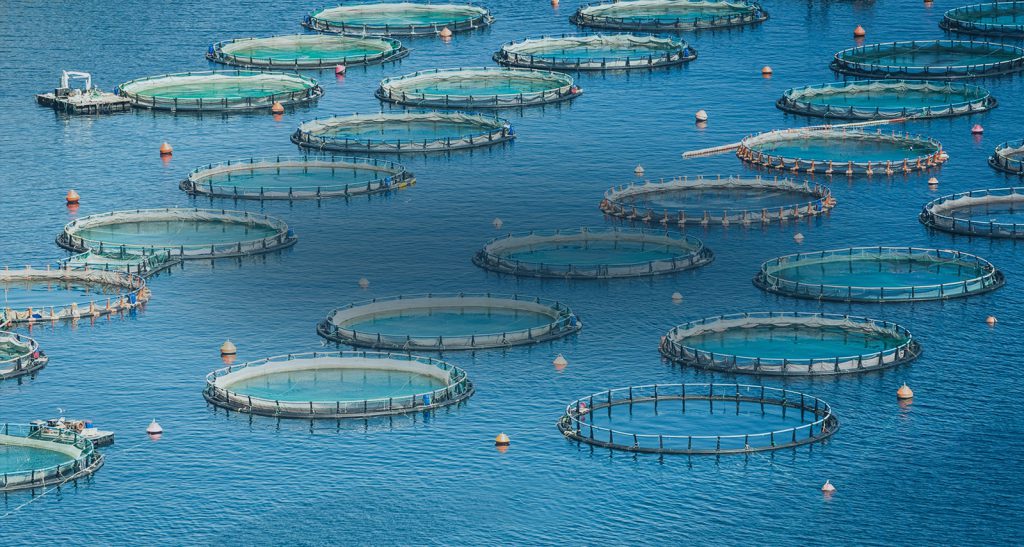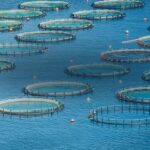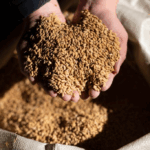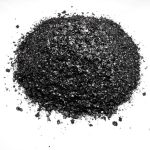What is Sodium Humate?
Sodium humate is a natural product made from humic acid, which comes from decayed organic matter like leonardite or lignite (types of coal-like materials). Think of it as a super-powered natural cleaner and health booster for water and aquatic animals. It’s widely used in aquaculture (fish, shrimp, crab, or turtle farming) and even in home aquariums because it’s safe, affordable, and eco-friendly. It comes in forms like powder, granules, flakes, or crystals, and it dissolves easily in water.
Why Use Sodium Humate in Aquaculture?
Sodium humate is like a Swiss Army knife for aquaculture—it does a lot of things to make ponds, tanks, or aquariums healthier for fish, shrimp, and other aquatic creatures. Here’s a detailed look at its main uses:
1. Improves Water Quality
Water quality is super important in aquaculture because dirty or toxic water can stress or kill fish and shrimp. Sodium humate helps in several ways:
- Cleans Up Toxins: It grabs harmful substances like heavy metals (e.g., copper, zinc), ammonia, and hydrogen sulfide, which can poison aquatic animals. It locks these toxins into forms that can’t harm fish or shrimp, keeping the water safer.
- Clears Murky Water: It acts like a sponge, soaking up tiny bits of organic waste, dirt, or leftover feed floating in the water. This makes the water clearer and reduces bad smells from the pond bottom.
- Controls Algae: When dissolved, sodium humate turns the water a dark, soy-sauce-like color for a few days. This blocks sunlight, slowing down algae and moss growth, which can otherwise take over ponds (especially in crab farming). It helps keep the water balanced without too much algae clogging things up.
- Stabilizes pH: It keeps the water’s pH (acidity level) steady—around 6.5–7.5 for freshwater ponds or 7.8–8.6 for saltwater. Stable pH means less stress for fish and shrimp.
- Boosts Good Bacteria: Sodium humate acts as food for helpful bacteria and microorganisms in the water. These bacteria keep the pond ecosystem healthy by breaking down waste.
2. Makes Feed Work Better
Adding sodium humate to fish or shrimp feed can make a big difference in how well animals grow and stay healthy:
- Better Digestion: When mixed into feed (usually 0.1–0.6% of the feed), sodium humate forms a protective layer in the gut of fish or shrimp. This helps them absorb nutrients better and blocks harmful toxins from getting into their system. It also slows down how fast food moves through their digestive system, giving them more time to soak up nutrients.
- Faster Growth: Studies show that fish like tilapia, carp, or grass carp fed with sodium humate grow faster and gain more weight. For example, adding 4% sodium humate to corn flour feed increased weight gain by 19–34% in some fish and boosted survival rates by 24–28%.
- Saves Feed: Because it helps animals use feed more efficiently, you might need less feed overall, which can save money (some studies say it cuts feed waste by about 10%).
- Healthier Animals: Sodium humate strengthens the immune system by supporting good gut bacteria and boosting natural defenses. This means fewer diseases like stomach issues or infections.
3. Fights Diseases
Sodium humate can help prevent and even treat common aquaculture diseases:
- Treats Fish Diseases: For example, a low dose (0.02% in water) can completely cure fish with white skin disease or water mold (saprolegniasis) in 7–10 days. It’s been tested on fish like carp and tilapia with great results.
- Reduces Antibiotic Use: It works as a natural alternative to antibiotics, which is awesome because it means fewer drug residues in fish and less risk of bacteria becoming resistant to antibiotics.
- Boosts Immunity: It helps fish and shrimp fight off diseases by making their immune systems stronger. For instance, it can protect tilapia from bacteria like Aeromonas hydrophila, which causes serious infections.
4. Improves Pond Bottom
The bottom of a pond can get nasty with built-up waste, leftover feed, and toxic gases like ammonia or hydrogen sulfide. Sodium humate helps by:
- Cleaning Sediment: When sprinkled as granules or balls, it breaks down and loosens up sludge, reducing harmful gases and keeping the pond bottom healthier.
- Limits Pollution: By cleaning up the bottom, it reduces pollution in the water, making the whole pond ecosystem better for aquatic life.
- Note: It works best in newer ponds. If your pond is old, has clay soil, or a thick layer of mud, sodium humate might not work as well.
5. Helps Aquariums and Plants
In home aquariums, sodium humate is great for both fish and aquatic plants:
- Healthier Fish: It improves water quality and digestion, keeping ornamental fish (like goldfish or bettas) vibrant and healthy.
- Better Plant Growth: It helps aquatic plants grow stronger roots and absorb nutrients, making your aquarium look lush and green.
- Cleaner Tanks: It reduces waste buildup and keeps the water clear, so your aquarium stays clean longer.
How to Use Sodium Humate
Here’s the practical stuff—how to actually use sodium humate in your aquaculture setup:
- For Water Treatment:
- Amount: Use 1–2 kg per acre of pond (assuming the water is 1 meter deep). For dirtier water or bigger systems like reservoirs, you might need more (up to 5 kg per cubic meter).
- How Often: Apply every 20 days or as needed, depending on water quality.
- How to Apply: Sprinkle powder or granules directly into the pond, or dissolve it in water first and then pour it in. Mixing it with oxygen boosters or probiotics (like EM bacteria) can make it work even better.
- For Feed:
- Amount: Add 0.1–0.6% to fish or shrimp feed (e.g., 2–5 kg per ton of feed). For example, 0.28–0.37% works well for tilapia.
- How to Mix: Blend it evenly into the feed before giving it to the animals.
- Tip: Start with a small amount and test it to make sure it works for your species.
- For Aquariums:
- Amount: Use very small doses (e.g., 1–10 mg per liter of water) to avoid overdoing it.
- How to Apply: Dissolve a tiny pinch in the tank water and monitor how fish and plants respond.
- Combining with Other Products: Sodium humate works great with probiotics, oxygenators, or other natural water treatments to boost results.
Benefits of Sodium Humate
Here’s why sodium humate is so popular in aquaculture:
- Affordable: It’s much cheaper than many chemical treatments or antibiotics, and a little goes a long way. Some studies show it can give a huge return on investment (like $50+ back for every $1 spent).
- Eco-Friendly: It’s natural, non-toxic, and doesn’t leave harmful residues, so it’s safe for the environment and the food chain.
- Versatile: Works for all kinds of aquaculture—fish (tilapia, carp), shrimp, crabs, turtles, and even aquarium setups.
- Improves Profit: Healthier animals, faster growth, and less feed waste mean better profits for farmers.
Things to Watch Out For
While sodium humate is awesome, there are a few things to keep in mind:
- Don’t Overuse: Too much can stress or harm fish and shrimp, slowing their growth or even causing toxicity. Stick to recommended doses.
- Not for All Ponds: It’s less effective in old ponds, clay-heavy ponds, or ones with thick mud layers. Test it in your setup to see if it works.
- Water Color: The dark, soy-sauce-like color it creates in water can last 1–3 days. This is great for algae control but might not look good in decorative aquariums.
- Limited Shrimp Data: Most research is on fish (like tilapia or carp). It works for shrimp too, but you might need to experiment to find the right dose.
- Quality Matters: Not all sodium humate products are the same. Buy from trusted suppliers (like those certified for aquaculture use) to ensure it’s pure and effective.
Real-World Examples
- Fish Farming: Farmers raising tilapia or carp have seen 20–30% better growth and survival rates when adding sodium humate to feed or water. It’s also helped clear up diseases without needing antibiotics.
- Shrimp Ponds: In shrimp farms, sodium humate reduces ammonia and keeps water clean, leading to healthier shrimp and less disease.
- Aquariums: Hobbyists use it to keep tank water crystal clear and help plants grow, making their fish look brighter and more active.
Final Thoughts
Sodium humate is a fantastic, natural tool for aquaculture. It cleans water, boosts growth, fights diseases, and saves money—all while being safe for the environment. Whether you’re running a big fish farm, raising shrimp, or maintaining a home aquarium, it’s worth trying out. Just be careful with dosing, test it in your system, and pair it with other good practices like regular water testing or proper feeding.









